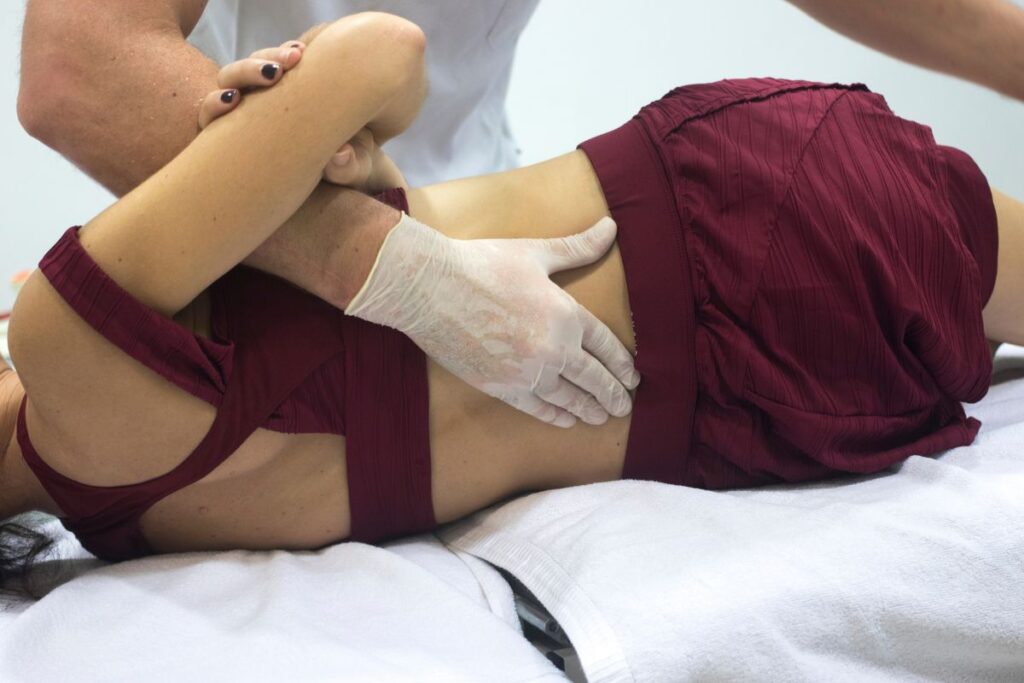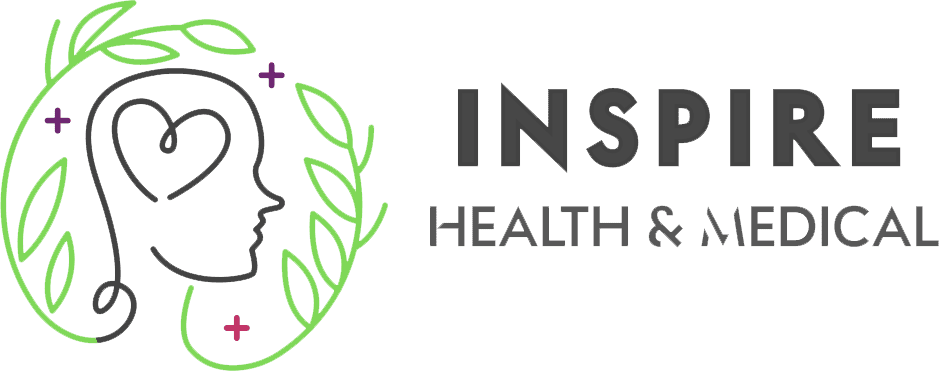Is osteopathy safe in early pregnancy? Absolutely – for both mother and baby. Osteopathic techniques support your body’s ability to change and accommodate your growing baby with maximum comfort. Seeing an Osteopath from the early stages of your pregnancy and onwards can maximise comfort and health while you’re expecting.
Is Osteopathy safe in early pregnancy?
Not only is osteopathy safe in early pregnancy, but it’s also recommended to help with the significant musculoskeletal changes the body undergoes to accommodate your growing baby.
While aches and pains are common during pregnancy, with the help of Osteopathic treatment, it doesn’t have to be that way!
Most expectant mums find the nature of Osteopathy not only effective but relaxing and comforting too.
How can an Osteopath help during pregnancy?
Now that we’ve answered the question is osteopathy safe in early pregnancy, let’s take a look at how an Osteopath can support a healthy and comfortable pregnancy.
Osteopathic treatment during early pregnancy right up until birth involves gentle techniques which aim to ease tension, aches and pains, increase mobility and relax the body,
The fundamental principle of Osteopathy is to treat the body as a whole. All components of the neuromusculoskeletal system (ligaments, muscles, nerves, joints) are designed to work together. If one area malfunctions or becomes damaged it can impact another part of the body.
As your baby grows during pregnancy, the musculoskeletal system is impacted by changes in spinal mobility, posture, and muscle imbalances.
Changes such as weight gain, hormonal softening of ligaments, stretching of muscles and posture change can all increase pressure on your joints, spine and pelvic floor muscles.
Musculoskeletal dysfunction during pregnancy can lead to numbness or pain in the pelvis, spine, hips, shoulders, ribs, arms or legs. There is also increased demand on respiratory function, blood circulation and lymph circulation.
Some of the most common complaints during pregnancy include:
Lower back pain
Dull pain in the lower back will likely resolve after giving birth, however osteopathic treatment helps make you more comfortable during pregnancy.
Sciatica
The sciatic nerve is placed under pressure through the lower back and pelvis as the baby grows. The pain scale can range from mild to severe, but it can be addressed with Osteopathic treatment.
Rib pain
The baby can push up under the rib cage or kicking the area can cause achy sides and ribs. Rib pain and shortness of breath often go hand in hand.
Indigestion and heartburn
Can be experienced throughout pregnancy but is most common during the third trimester because the baby’s growth creates pressure on the intestines and the stomach.
Constipation
Once hormone levels begin to increase which can happen as early as the second or third month in your first trimester.
Incontinence
During pregnancy, the pelvic floor muscles which support the bowel, bladder, and uterus are weakened. This can result in urinary or bowel incontinence, particularly in the later stages of pregnancy.
Headaches
Tension headaches are common in the first trimester of your pregnancy. Weight fluctuation and changes in blood volume and hormones can result in headaches. Lack of sleep, dehydration, and nausea may also be linked to tension headaches.
Swollen ankles and more prominent varicose veins
While uncomfortable, swelling during pregnancy is normal as your body retains more fluid and your growing uterus puts pressure on your veins, which slows blood circulation. However, sudden or excessive swelling may be a sign of preeclampsia that can develop in the later stages of pregnancy.
Difficulty sleeping
This may be from frequent urination or difficulty finding a comfortable position.
Lower abdominal pain
Some lower belly pain is normal during pregnancy and not usually a reason for concern but it can be uncomfortable.
Pelvic girdle pain
Aches in the pelvic area and lower back area, including musculoskeletal pain radiating to the upper thighs and perineum.
Osteopathy offers specific hands-on treatment that can help alleviate many of these symptoms to improve overall well-being.
Osteopathic treatments: what to expect when you’re expecting
Your Osteopath will assess you and select techniques appropriate and safe for your stage of pregnancy. The protection and health of an expectant mum and her growing baby are always the osteopath’s priority.
Modalities may involve gentle joint mobilisation, soft tissue massage, stretching or taping.
Stretching: Encourages flexibility of joints and muscles to ease pregnancy aches and pains. Stretching also helps increase blood flow to improve circulation issues.
Articulation techniques: Joints are mobilised by being passively taken through their normal range of motion.
Muscle energy techniques (MET): Used to help mobilise joints, stretch tight muscles and treat soft tissue, MET uses the principles of reciprocal inhibition to increase muscle length. In turn, this can reduce pain, relax muscles, and improve circulation and lymphatic drainage.
Soft tissue massage: Targets muscles, tendons, ligaments, or other connective tissue such as fascia to release tightness.
Posture and exercise advice: Your osteopath can guide you through how to stand, walk, sit, and lie in positions to minimise back strain. They can also advise on safe exercise to improve strength and mobility, in turn helping with active labour and delivery.
Cranial osteopathy: A gentle therapy that aims to balance and strengthen the flow of the cerebro-spinal fluid (CSF). This is the fluid which surrounds and nourishes the brain and spinal cord.
Osteopaths will use a specialised pregnancy table or supporting cushions which will allow you to lie on your tummy safely and comfortably.
Depending on what stage you are at in your pregnancy, you may be lying in a variety of positions during treatments.
Stages of pregnancy and Osteopathic treatment
Each stage of pregnancy brings about changes and places different stress on the body.
Making osteopathy safe in early pregnancy and later trimesters means your Osteopath will carefully assess you at each stage. They will then devise a corresponding treatment plan to increase comfort, reduce pain, and prevent future complications.
First trimester
Pregnancy can exacerbate previous injuries or conditions. Osteopathic treatment during the first trimester can help correct poor posture or past injuries which may interfere with your pregnancy and labour.
For example, tailbone trauma or pelvic trauma from a previous pregnancy can cause tension in the pelvic ligaments which can interfere with a smooth labour and delivery.
During early pregnancy, the uterus begins to tilt forward to allow room for bub to grow, which can cause lower back pain.
Up until 14 weeks of pregnancy, most osteopaths will generally avoid spinal manipulation.
Second trimester
As your pregnancy progresses, changes to your posture, gait and functional movement may cause pain and put you at risk of falling. Osteopathic care including balancing techniques, stretching, and massage can minimise the chance of falling while increasing comfort.
Third trimester
Often the most uncomfortable period for an expectant mum, the third trimester increases stress on the lumbar spine as the baby descends into the pelvis. This can induce back pain, sciatic pain and paresthesia in the leg.
Muscle cramps tend to increase during the third trimester, especially at night. Using soft tissue methods and exercises to reduce tension, Osteopathic treatment can help minimise the intensity of muscle cramps.

Osteopathy for postnatal health
Osteopathic care can help make life as a new mum more comfortable and facilitate post-birth recovery too.
With the fundamental principle of Osteopathy in mind, that each part of the neuromusculoskeletal system affects another, stress (physical and emotional) during childbirth may have further reaching implications.
Many women experience a wide range of postnatal issues, depending on the type of labour they experience.
Pelvic misalignment
Pelvic dysfunctions caused by pregnancy can continue postnatally as chronic pelvic or low back pain. Osteopathy can help restore and maintain healthy pelvic alignment and mobility which can ease discomfort and pain.
Priming the pelvis with Osteopathic treatments during pregnancy to mobilise the area and help open and create space can minimise pelvic stress during birth.
Postural pain due to breastfeeding
It’s common for new mums to experience pain in the mid to upper spine that develops when nursing and feeding a baby. Your Osteopath can help relieve unwanted neck, shoulder and back pain and advise on the best positioning and posture.
Babies can benefit from the care of an Osteopath, too. New mums who have difficulty breastfeeding may find Osteopathic manipulative techniques useful to improve nipple feeding dysfunction.
Digestive issues
Many women find their digestive systems fragile and disrupted after birth. This can present as constipation, wind, incontinence and bloating. These symptoms can be caused by damage to the muscles during birth and the slowing of the digestive system during labour.
Mental health
The postnatal period can be an overwhelming and stressful time. By encouraging your body to heal and regulate itself through Osteopathic treatments, the internal environment (your nervous system) can be rebalanced. This rebalancing can have a positive impact on mental health and overall well-being.
Even if your delivery was without complications, a general assessment 4 – 6 weeks post-birth with your Osteopath can help ensure bones and organs have returned to their correct place.
Have questions about how osteopathy can play a healthy and positive role in your pregnancy? Reach out to our team. We’re passionate about providing osteopathic care for expectant mums and making osteopathy safe in early pregnancy and beyond.






